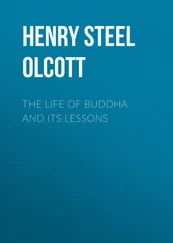This cognitive disorientation is explicitly named in the second scene, the compartment of Gehinnom called Tsalmavet. “Nothing in the world is as paradoxical [ davar vehipukho ] as that compartment. It is circular in shape but appears square, square in shape but appears circular. The eyes perceive it one way, the mind another. These differences in perspective induce a certain melancholy” (28). The compartment is notable for being neither hot nor cold and totally airless, and for being presided over by a nameless angel who does nothing but stand with his mouth agape “like a person utterly bored and about to yawn.” The population of this compartment is huge, “twice the number of people who went out of Egypt,” and, as is evident from their accoutrements (silver-collared talitot and large tefillin), they are all heads of yeshivot and chief rabbis of whole regions, and they are all prodigious Torah scholars with total mastery of the Talmud with its earlier and later commentators. What is most unnerving about this scene is how these mighty throngs are situated. Each is separated from the other by a distance of two thousand cubits (a Sabbath boundary), and because their eyes have grown dim from study they cannot see the hundreds of thousands of similar scholars who float in the space surrounding them. Each, literally, is full of himself and, puffing himself up, proclaims, “I’m all alone in the world; all wisdom dies with me” (29). When he finally manages to prop himself up and realizes that the tiny distant creatures are also Jews, his overwhelming desire is to bestow on them some of his pilpul . (Pilpul is the intellectual gymnastics employed by advanced scholars to resolve difficult legal problems.) But as soon as he conceives of this plan, he falls into a desultory sleep.
What happens next in the shamash’s description of this compartment can only be described as a scene of talmudic jousting that is a parodic enactment of pilpul itself. The sleeper awakes to see someone striding toward him, and the two begin to trade taunts. One claims that he possesses a pilpul greater than anyone else has ever conceived; the other retorts that the first has stolen his words and that he possesses a pilpul that the other would long to hear with every fiber in his body. The two now enter into a parody of scholarly etiquette in which each, supposedly deferring to the other, in fact claims the right to speak first. But the contest turns out to be pointless because communication proves impossible. As soon as one begins to speak, his ears expand until they cover his entire body. The two stand facing one another, utterly mortified and wanting to cry out. But the “first one’s scream dies in his throat, and the other’s is muffled by his ears.” The total effect of their panic on the torpor of the presiding angel is to make him rock back and forth; he would have destroyed them if he had not been striving to produce a yawn.
The second compartment, Gag ‘al Gag (Roof Upon Roof), described in Chapter 11, visits a similar punishment on its scholarly inhabitants but stresses other aspects of their ordeal. The hugeness of this compartment consists in its spatial dimensions rather than its population. Not only is it so vast that no boundaries are perceptible to the eye but the compartment as a whole is suspended within a void ( talui ‘al belimah ). The inhabitants all have prominent foreheads and pinched eyes from excessive study, and they are frozen in an endlessly repeated gesture in which they pluck hairs from their beards and float them into space. Yet instead of being isolated from one another in this vastness, as they were in the other compartment, here they are piled one atop the other. In this crush, they do in death what they did in life: they pronounce ḥidushim. The difference between their scholarly activity now and then results from the peculiar conditions of academic integrity that are involuntarily visited upon them by Gehinnom. When they were alive and going about their business of issuing ḥidushim, if they found they had been hasty or exaggerated and thus made an error, they always had available to them the option of retraction. But here in Gehinnom, every word they uttered while alive is “permanently engraved in public view with his signature attached” with no possibility of denial.
The corruption of Torah study by grandiosity is the sin that has landed these prodigious scholars in Gehinnom. When a scholar penetrates the contextual truth of a passage of Talmud ( poshet lo devarim kifshutam ), the truer his insight the less his need to inflate his importance on the strength of it. But the more forced and over-ingenious is his insight, the more desperate he is to put it on display to his colleagues. And thus his punishment in Gehinnom. When he opens his mouth to broadcast his ḥidush, his lips fly away from him, and when he sticks out his tongue to find his lips, his tongue gets impaled on his incisors and begins to swell. The tongue thickens and swells up to the size of a church bell, a figure of speech the shamash insists is apt, “for just as a church bell peals without knowing why, so the tongue wags without knowing why it was put into motion” (32). The scholar he was seeking to address now tries to cry out in fright, only to have his own scream swallowed between his lips. It is little wonder that the angel appointed over this compartment of Gehinnom is called Otem, after the Hebrew verb that designates the shutting of the ears and the failure of comprehension.
In gauging the panic and horror these sights induce in the shamash, it is important to recall once again the function of dramatic irony in the story. We the readers have been given by the narrator some preparation for inferring a correlation between the particular punishments inflicted on these scholars and the particular sins that provoked them, by means of the remarkable opening scene of the story: the embarrassment of the garrulous son-in-law and his banishment from the synagogue. But the shamash, so many decades earlier, comes upon these tortures entirely unprepared, and when he does react there is a “double whammy” effect to his reaction. He is unhinged at first by the absence of an evident explanation for the tortures he has witnessed; yet once an explanation is provided by the Rabbi, the shamash’s panic grows greater instead of being mitigated. The first wave of the shamash’s response is horror because the boundary between him and the tortured souls momentarily disappears and he feels that the same grotesque tortures may be happening to him. “Panic seized me. Maybe my mouth was contorted. Maybe my lips had flown apart” (32). Having hidden his face out of horror in the folds of the Rabbi’s cloak, the shamash loses his bearings, and he fears that his ears are growing to enclose his body. When he wordlessly implores the Rabbi for an explanation, it is not delivered immediately. The Rabbi first takes the shamash’s measure to determine exactly how much he is capable of understanding, and the shamash uses the benefit of his retrospective wisdom to delay the rush of events and interpolate a vignette about a Jewish jeweler who measured the ears of the Gentile noblewoman so that he could fashion earrings of exactly the right proportions. The Rabbi even makes the shamash ask a second time, for he “wanted to see how important my question was to me. Sometimes the mouth wants to ask more than the heart wants to know” (33). This wisdom about unnecessary speech, which is the moral preoccupation of both the narrator and the shamash throughout the story, is, again, retrospective wisdom that was not available to the shamash when he first gazed upon these hellish afflictions.
When, after several additional delays, Rabbi Moshe fashions his custom-made response, he delivers a series of clarifications that provide some explanation but no consolation. He explains, to begin with, that what they have seen is a special compartment of Gehinnom — a kind of infernal VIP lounge, so to speak — reserved for great rabbis, heads of yeshivot, and rabbis of whole regions. Special emphasis is placed on the fact that these torments have been in operation for ages, and that the pitiable denizens of this compartment include sages from the time of Talmud and the expulsion from Spain. The nature of their punishments, he goes on to point out, are dictated by the nature of their offenses; because they sinned in matters of speech, they are punished by being rendered mute. If in life they sat one atop the other in the synagogue and beit midrash blathering to each other, now in death they are spread out at a great distance from one another and cannot get a word out of their mouths. They are tantalized by being free to produce all the ḥidushim they wish and at the same time obstructed in communicating them to anyone else. At the root of their reprehensible behavior during their lifetime — the fundamental key to all their troubles — was the sin of talking and flogging their ḥidushim during prayers and the reading of the Torah: “Our Master’s words disturbed me more than anything my eyes had seen” (34). When the shamash first came upon the afflicted souls without the benefit of any accompanying explanations, the monstrousness of their suffering seized him with raw terror; but that terror had nothing to do with him personally. Now, with the benefit of those explanations, the terror has metamorphosed into a cognitive-theological-moral complex that has turned around to seize him by the throat. “Who can say that he has never committed that sin?” anguishes the shamash. “Who among us keeps his lips and tongue under control at all times? Who has not talked during the service or the Torah reading? And if those learned in Torah bear such a punishment, what about the rest of us?” (34). Although he well knows that conversation during prayers is a transgression, his mind simply cannot stretch itself to comprehend the rationale for an otherworldly retribution so extreme in its ferocity. Using his best scholastic casuistry, the shamash can appreciate the regrettable extra burden placed on the angels, who now have to exert themselves to separate out true prayers from idle conversation. But this consideration does not go very far in addressing the disturbing phenomenon of the incommensurability between sin and punishment. The shamash glumly concludes, “The matter still remains unsettled” (35).
Читать дальше












![Edward Ellis - Adrift on the Pacific - A Boys [sic] Story of the Sea and its Perils](/books/753342/edward-ellis-adrift-on-the-pacific-a-boys-sic-s-thumb.webp)